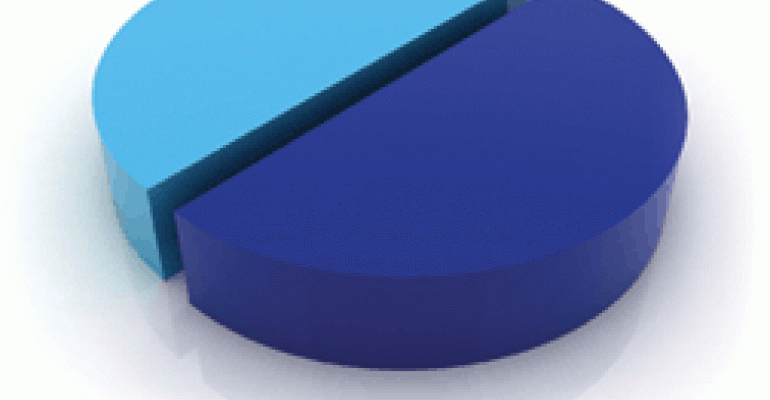
In the turmoil of 2008, nearly every asset class collapsed. Most stocks and bonds — which normally have little correlation — fell in lockstep. That left investors wondering why so many careful diversification plans failed to protect them during the worst of the downturn.
The ugly truth is that in moments of extreme crisis most securities become correlated. But there are a handful of funds that proved resilient throughout the downturn. These investments are truly uncorrelated. You can bet that they will stay afloat the next time the markets plummet. Should you put a big percentage of your assets in the uncorrelated funds? Probably not. Some of the funds tend to produce little or no returns during bull markets. Still, it could be worth putting 5 percent or so of your assets into these investments to help diversify portfolios.
One of the stars of the downturn was Rydex/SGI Managed Futures Strategy (RYMTX), which returned 8.5 percent in 2008. The fund tracks the S&P Diversified Trend Indicator, a benchmark that follows commodity markets, including precious metals, energy, and foreign currencies. To calculate the benchmark, S&P uses a simple system. Once a month, S&P checks the spot price for each commodity. If the price is above the average for recent months, the indicator takes a long position in the futures of the commodity. If the spot price is below the average, the benchmark goes short the commodity.
Hedge funds have long used similar commodity systems. The idea is that once a commodity begins moving up or down, it tends to continue in the trend for some time. By following the trends, the hedge funds aim to deliver single-digit annual returns that are not correlated with stocks or bonds.
Most often S&P's trend-following system has worked. But it can produce negative returns during periods when markets swing sharply and follow no clear pattern. That happened in 2009 when the fund lost 4.3 percent.
Another potential diversifier is iPath S&P 500 VIX Mid-Term Futures (VXZ), an exchange-traded note (ETN) that tracks the CBOE Volatility Index, commonly known as the VIX Index. The VIX is a measure of the volatility of the S&P 500. When investors become fearful, volatility spikes and the VIX rises. Barclays Bank launched the ETN a year ago. If it had existed in 2008, the ETN would have produced big gains in 2008. But lately the ETN has been plummeting because volatility has been dropping as calm returns to the markets.
One of the steadiest performers recently has been Caldwell & Orkin Market Opportunity (COAGX), which has returned 5.3 percent annually during the past five years, outdoing the S&P 500 by 5 percentage points. Besides owning stocks, portfolio manager Michael Orkin can take short positions and hold fixed income. The fund has done particularly well in downturns. Caldwell limited the damage in 2008 by shorting financial and retail stocks. The fund also held a big cash position. “This fund is a fantastic diversifier,” says Louis Stanasolovich, president of Legend Financial Advisors, a registered investment advisor in Pittsburgh. “It has a low correlation with almost any investment.”
Stanasolovich has owned the fund for 15 years. During that period Caldwell has outdone the S&P 500 while taking less risk than the benchmark as indicated by standard deviation. The portfolio has an R-Squared of 0, suggesting that there is no correlation with the S&P 500.
Another long-short fund with an R-Squared of 0 and strong returns is Arbitrage Fund (ARBFX). The fund practices merger arbitrage, investing in shares of takeover candidates and sometimes shorting the acquirers. Merger funds aim to profit from situations where stocks trade at discounts to the announced takeover price. Say a stock was trading at $19 before an acquirer offered to buy at $21. The shares may rise to $20, but they don't climb to the full takeover price because investors worry that the deal could collapse. If that happens the shares would fall back to their original level.
When investors worry that a deal can fall through, the spread between the current share price and the takeover price can be 30 percent or more. While such deals can produce hefty returns for merger investors, they are too risky for Arbitrage Fund's John Orrico. He sticks with deals that have small spreads because the transactions are likely to close. “We play in the safer end of the risk spectrum,” Orrico says.
Investors looking to diversify their currency exposure should consider Merk Hard Currency (MERKX), a fund with an R-Squared of 0. Portfolio manager Axel Merk invests in a basket of currencies from countries that seem to have strong monetary policies. Lately he has been emphasizing commodity producers, including Canada, Norway and Australia. Such countries seem likely to maintain balanced budgets. That should help the currencies to deliver steady results, even during periods when stocks sink.







